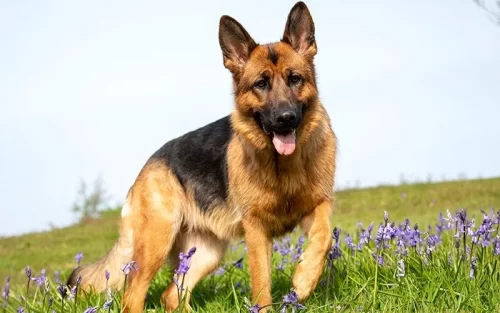Introduction
Originating from the mountainous region of Tibet, the Lhasa Apso is a small, charming, and regal dog breed that has captured the hearts of dog lovers worldwide. Lhasa Apsos boast a unique combination of independence, loyalty, and a lively personality that makes them stand out from other small dog breeds. In this comprehensive guide, we will explore the fascinating world of Lhasa Apsos, discussing their characteristics, the ideal human companions for them, and breed-specific information.
Lhasa Apso Characteristics
Lhasa Apsos are small dogs, standing between 10 to 11 inches tall and weighing 12 to 18 pounds. Their most distinctive feature is their long, dense, and luxurious coat, which comes in various colors such as gold, cream, black, and silver. Lhasa Apsos have dark, expressive eyes that exude warmth and intelligence. Their sturdy bodies and feathery tails, which curl over their backs, give them an unmistakable, regal appearance.
Lhasa Apsos were originally bred as sentinel dogs in Tibetan monasteries, which explains their keen sense of hearing and alert disposition. Despite their small size, these dogs are confident and independent, always ready to alert their owners of any perceived threats.
Temperament and Personality of Lhasa Apsos
Lhasa Apsos are known for their loyal, affectionate, and somewhat aloof personalities. They form strong bonds with their families and can be wary of strangers, making them excellent watchdogs. Although Lhasa Apsos have a playful and spirited nature, they also appreciate their independence and can be quite stubborn at times.
Early socialization and proper training are essential to help Lhasa Apsos develop into well-rounded and well-behaved pets. They are intelligent dogs that respond well to positive reinforcement techniques, but their independent nature means they may require a bit of patience and persistence during training sessions.
Lhasa Apsos and Exercise
Lhasa Apsos are not overly energetic dogs, but they still require regular exercise to stay healthy and happy. A daily walk or engaging play sessions indoors will satisfy their exercise needs. Providing your Lhasa Apso with mental stimulation in the form of puzzle toys or interactive games will also help keep them engaged and prevent boredom.
Ideal Owners for Lhasa Apsos
Lhasa Apsos are best suited for individuals or families who appreciate a loyal and independent canine companion. They are an excellent choice for those living in apartments or smaller living spaces, as their size and exercise requirements are manageable in such environments.
First-time dog owners can successfully raise a well-behaved Lhasa Apso with dedication, patience, and consistency. It’s essential to establish a routine and provide consistent training to ensure your Lhasa Apso understands what’s expected of them.
Lhasa Apso Health Concerns
Lhasa Apsos are generally a healthy breed with a lifespan of 12 to 15 years. However, they can be prone to certain breed-specific health issues. One of the most common health concerns in Lhasa Apsos is hereditary kidney dysfunction, known as renal dysplasia. Responsible breeders will screen their dogs for this condition and avoid breeding affected animals.
Other potential health issues that can affect Lhasa Apsos include hip dysplasia, eye conditions such as progressive retinal atrophy and cherry eye, and allergies. Regular veterinary checkups and preventative care will help ensure your Lhasa Apso maintains optimal health throughout their life. It’s also essential to monitor their weight, as obesity can lead to various health issues such as diabetes, heart disease, and joint problems.
Grooming and Maintenance for Lhasa Apsos
Lhasa Apsos have a beautiful, long coat that requires regular grooming to keep it healthy and tangle-free. Daily brushing with a pin brush or slicker brush will help prevent matting and remove loose hair. Many Lhasa Apso owners choose to have their dogs professionally groomed every few months to maintain a neat appearance.
In addition to coat care, routine maintenance for Lhasa Apsos includes regularly checking and cleaning their ears to prevent infections, trimming their nails to avoid overgrowth and discomfort, and maintaining proper dental hygiene by brushing their teeth and providing dental chews or toys.
Training and Socialization for Lhasa Apsos
Early training and socialization are crucial for raising a well-rounded and well-behaved Lhasa Apso. Start training and socialization as early as possible to ensure your Lhasa Apso grows into a well-mannered adult. This breed’s independent nature can make training a bit challenging, so using positive reinforcement techniques such as praise, treats, and toys will yield the best results.
Consistency is key when training a Lhasa Apso. Establishing a routine and setting clear boundaries will help your dog understand what’s expected of them. It’s essential to be patient and persistent when training, as this breed may take longer to learn new commands.
Socializing your Lhasa Apso with other dogs, animals, and people from a young age will help prevent fearfulness and ensure they are comfortable in various situations. Regularly exposing your dog to different environments and experiences will build their confidence and make them a better canine citizen.
Conclusion
Lhasa Apsos are a unique and charming breed that offers endless companionship to the right owner. Their regal appearance, independent personalities, and strong bonds with their families make them an excellent choice for those who are willing to provide the time, energy, and dedication required to meet their specific needs.
If you’re an individual or family seeking a loyal and loving companion that doesn’t require an excessive amount of exercise, a Lhasa Apso might be the perfect addition to your home. Remember, early training and socialization, regular exercise, and proper healthcare will ensure your Lhasa Apso leads a happy, healthy life by your side.



